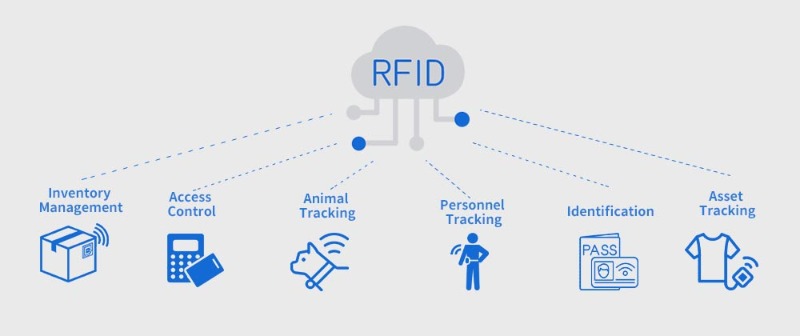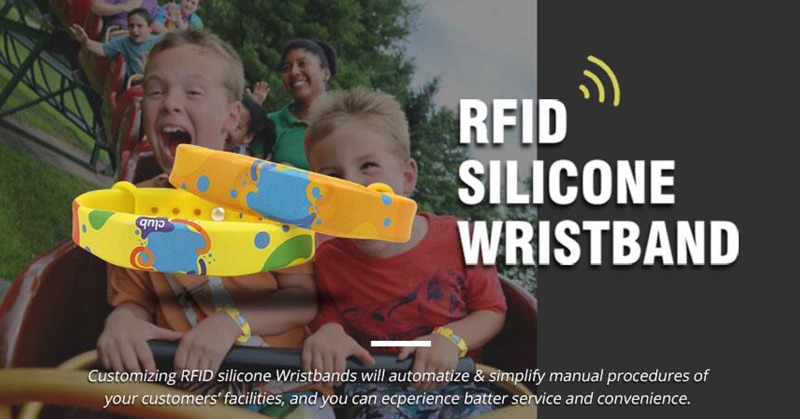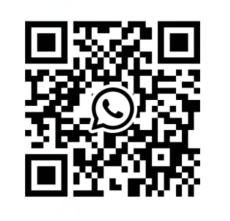
RFID chips are widely used in products such as wristbands, cards, tags, hangtags, and key fobs. They are suitable for deployment in various industries, ranging from healthcare and retail to logistics and security. This article explores the technological landscape of RFID chips, explains which products are suitable for each chip type, and describes real-world application scenarios.
Low-Frequency (LF), High-Frequency (HF), and Ultra-High-Frequency (UHF) Chips
RFID chips are categorized by operating frequency:
- Low-Frequency (LF) Chips (125 kHz, 134.2 kHz): LF chips have a shorter read range (up to 10 cm) and are resistant to liquids and metal corrosion. They are commonly used in animal tracking, access control, and industrial applications.
- High-Frequency (HF) Chips (13.56 MHz): HF chips, such as the NXP MIFARE series, have a read range of up to 1 meter. They support data encryption and are compatible with Near Field Communication (NFC). High-frequency chips dominate applications such as transportation ticketing, secure payments, and library management.
- Ultra-high frequency (UHF) chips (860-960 MHz): UHF chips have a longer read range (typically 1-10 meters), enabling rapid identification of bulk items. UHF systems are common in logistics, retail, and supply chain environments, but require careful planning due to their susceptibility to interference from water and metal.
Active vs. Passive Chips
- Passive RFID chips: Draw energy from the reader signal, eliminating the need for an onboard power supply and making them cost-effective for tagging large numbers of assets.
- Active RFID chips: They have a built-in battery, actively transmit signals, and have a read range of up to 100 meters. Their long lifespan and wide read range make them ideal for real-time location systems used in fleet management and critical asset monitoring.
EM Microelectronic Chips
EM chips, such as the EM4100 (low frequency, 64-bit read-only) and EM4305 (low frequency, read/write), can be used for simple identification; they are commonly used in access control cards, animal identification, and industrial safety compliance.
NXP MIFARE Series
- MIFARE Classic: Supports 1K or 4K bytes of memory; suitable for public transportation cards, access control, and event ticketing.
- MIFARE DESFire: Features hardware encryption and a flexible file structure and can be used for e-government IDs and payment cards.
- MIFARE Ultralight: Ultra-low-cost, with limited memory (64 bytes), widely used for one-time transportation tickets and promotional campaigns.
Alien Technology Higgs UHF Chips
Alien's Higgs series (e.g., Higgs-3, Higgs-9) features high sensitivity, EPC codes, user memory, and customization for global frequencies. Widely used for item-level tagging in the retail supply chain.
Impinj Monza UHF Chip
Impinj Monza chips (Monza R6, Monza 4QT) provide reliable, high-speed read performance for apparel tagging, asset tracking, and cargo authentication in demanding logistics environments.

RFID Wristbands
RFID wristbands are comfortable to wear and offer strong recognition capabilities. Materials include silicone, woven cloth, and disposable paper. Low-frequency wristbands are suitable for access control at aquatic centers and industrial sites. High-frequency wristbands are ideal for festivals and hospital patient management. UHF wristbands are suitable for crowd analysis in large venues.
RFID Cards
Cards are ideal for personal identification and access control. Low-frequency (LF) cards (EM4100) are used for basic access control systems; high-frequency (HF) cards (MIFARE Classic, DESFire) can be used to verify employee identities, grant access to secure facilities, and serve as a cashless payment solution. Less common UHF cards can be used for long-range parking and occupancy monitoring within large campuses.
RFID Tags and Labels
Tags and labels are designed to be attached to products, equipment, or packaging. Ultra-high-frequency (UHF) chips dominate the market due to their fast read speeds and batch processing capabilities. For example, UHF tags (Impinj Monza R6) enable retailers to instantly scan thousands of items at a distance.
RFID Remote Controls and Key Fobs
Compact RFID remote controls are used for access control and secure asset authentication. Low-frequency (LF) remote controls are suitable for basic access control and vehicle immobilizers; high-frequency (HF) remote controls are commonly used for hotel room locks and corporate security areas; and ultrahigh-frequency (UHF) remote controls are also used in high-throughput parking systems due to their longer transmission range.
Specialized Specifications
RFID chips have evolved into rugged, specialized products suitable for harsh environments:
- On-metal tags: Designed for metal surfaces, they typically use tuned ultrahigh-frequency (UHF) chips and are used for tool management and heavy machinery tracking.
- Tamper-evident tags: Employ physical or electronic seals; HF or UHF chips can detect tampering, enhance supply chain integrity, and verify pharmaceutical authenticity.

Multi-Protocol and NFC Integration
The latest RFID chips support multiple protocols and are compatible with both legacy and advanced readers. NFC-enabled high-frequency (HF) chips, such as the NTAG series, interact directly with smartphones, facilitating consumer authentication, loyalty programs, and personalized retail experiences.
Enhanced Security Technologies
Modern RFID chips integrate mutual authentication and hardware security modules. For example, the MIFARE DESFire EV3 and Infineon my-d move chips support AES, TripleDES, and ISO/IEC 7816 standards, protecting high-value transactions and sensitive personal data.
Emerging Form Factors: Flexible and Eco-Friendly Chips
Printed electronics technology is enabling flexible, biodegradable RFID chips suitable for packaging and disposable tickets. These chips are expected to expand RFID applications into sustainability-focused industries and areas previously limited by rigidity or cost.
Chip Miniaturization and IoT Integration
Continuous miniaturization enables RFID chips to be seamlessly integrated into tiny objects, consumables, and wearables. Combined with the Internet of Things (IoT), RFID-based devices can not only identify assets but also proactively communicate their status, location, or condition, thereby building an autonomous ecosystem.
Conclusion
With the continued advancement of RFID chips—embracing the IoT, robust security, and flexible form factors—a new era of automated, precise, and intelligent asset management is emerging. Effective deployment relies on a thorough understanding of the technology, rigorous piloting, and a commitment to continuous improvement. By following best practices and leveraging the expertise of trusted vendors, organizations can fully leverage the transformative potential of RFID to achieve operational excellence and competitive advantage.
Chat NOW
Scan to wechat :

Scan to Whatsapp :
